MoodBites: eat with your mood, not against it
Impact
The app reduced the effort required to track expenses by streamlining categorization and surfacing insights visually.
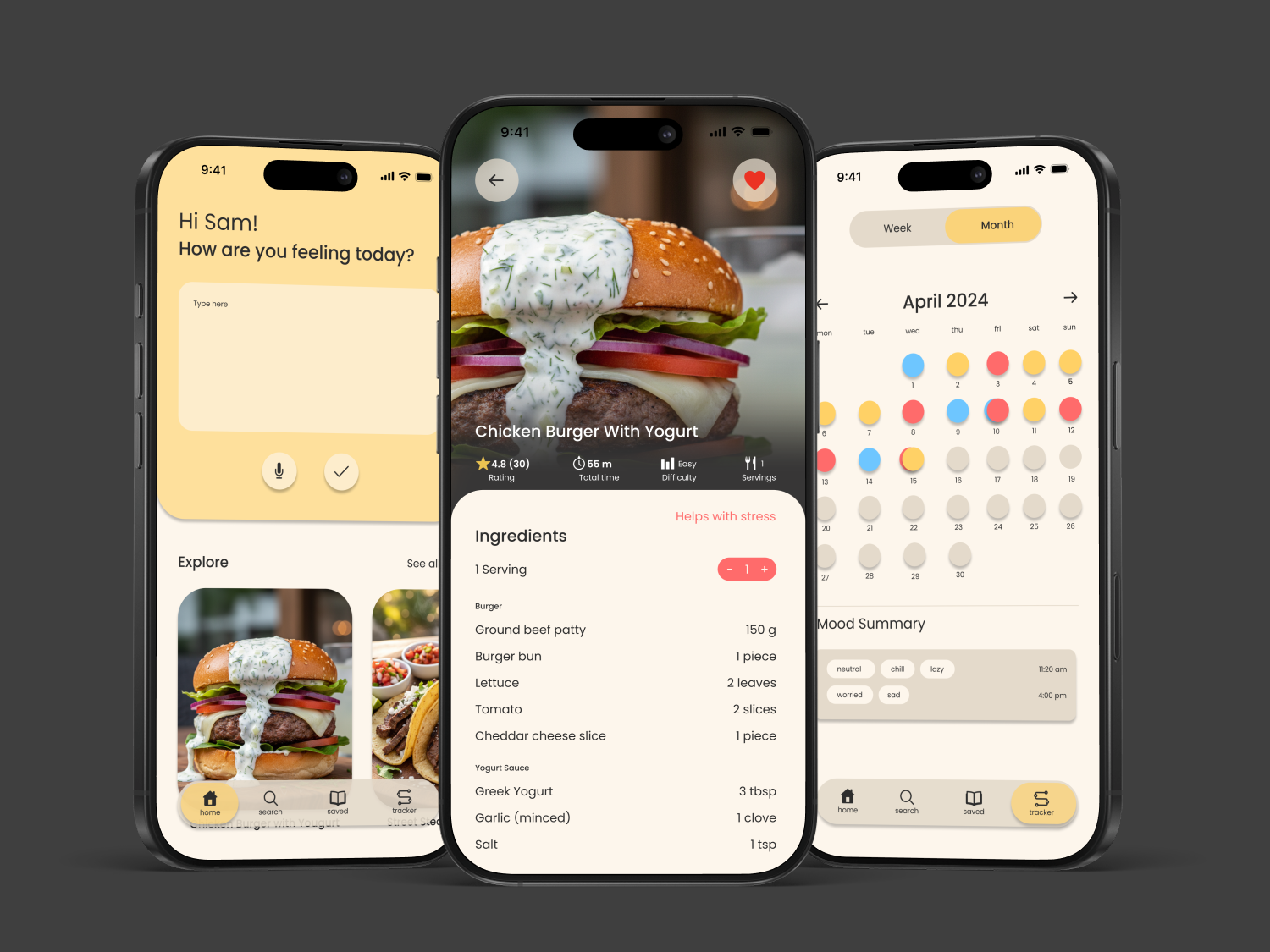
Client & Product
MoodBites is an emotion-driven app designed to connect users’ feelings with personalized meal suggestions. Recognizing that food is often tied to mood, the app leverages AI-driven mood tracking to recommend recipes that are not only nutritious but also emotionally supportive. The goal was to design an app that feels empathetic, approachable, and helpful in guiding users to meals that reflect or improve their emotional state.
Background
Food is deeply tied to emotions, yet most recipe and meal-planning apps ignore the emotional context behind eating. Users often make food decisions when stressed, tired, or in need of comfort, but current solutions focus only on nutrition or convenience. I created MoodBites to explore how AI and design can bridge this gap — helping users reflect on their emotions while suggesting meals that align with or balance how they feel. The app was designed as a concept project to demonstrate how UX design can combine emotional wellbeing with nutrition. My role spanned end-to-end design: conducting research, defining personas, mapping user flows, creating visual mockups, and testing hypotheses to validate design decisions.
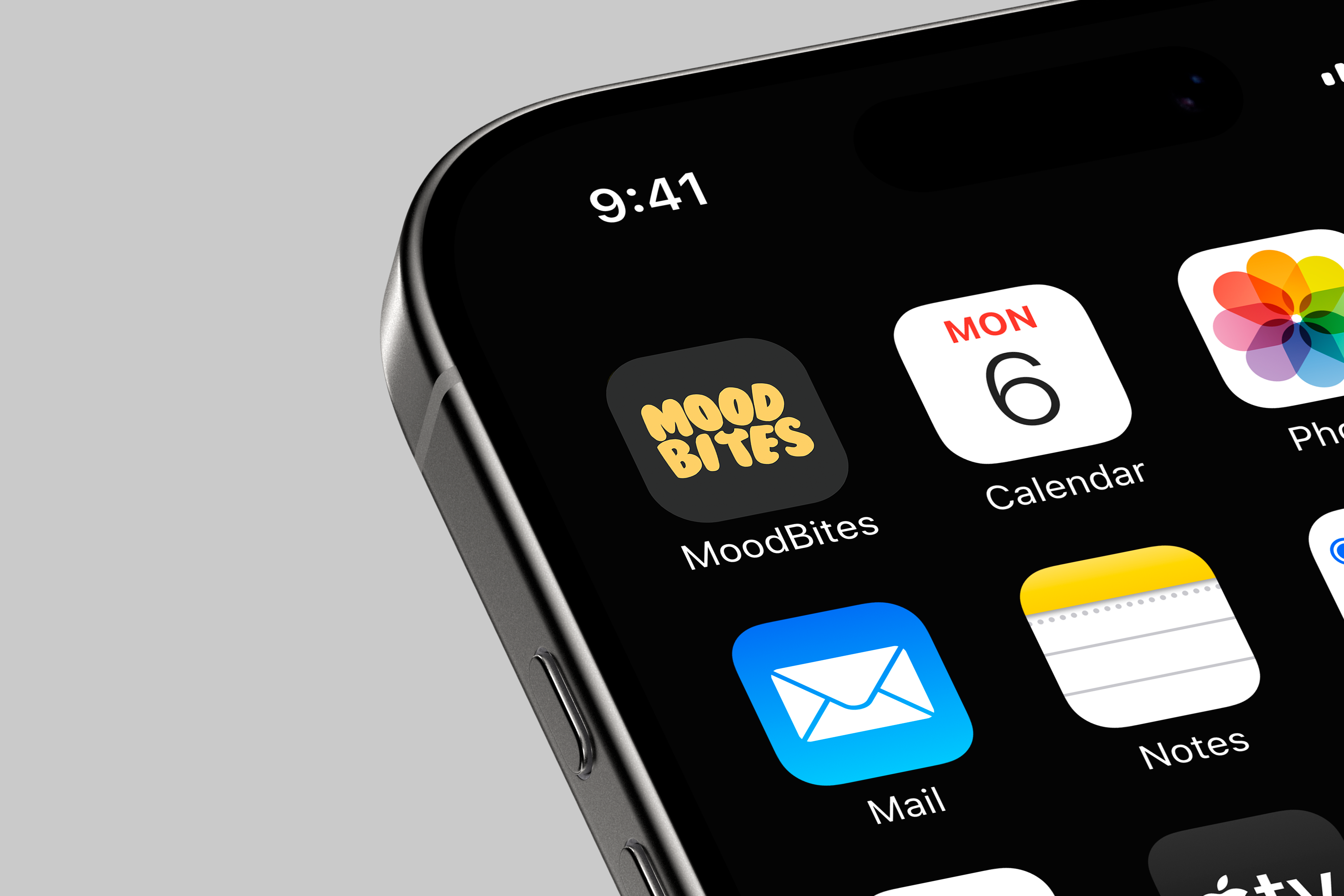
Business Requirements & Constraints
The project aimed to create a mood-centered, scalable, and supportive app that personalizes meal recommendations based on emotional states. The primary goals included building emotion-driven features that connect moods with food choices, designing a friendly and trustworthy UI, and incorporating AI-driven personalization for future growth. Constraints included ensuring responsible handling of sensitive mood data, balancing emotional design with nutritional accuracy, and maintaining inclusivity across diverse dietary preferences and demographics.
MOODBITES' OBJECTIVES FOR THE PRODUCT
. Deliver mood-based meal guidance that feels both comforting and nutritionally supportive.
. Design a scalable system that can grow to include features like mood history visualization, advanced AI insights, and integrations with wearables.
. Ensure an empathetic user experience with uplifting visuals, approachable navigation, and thoughtful handling of emotional data.
MOODBITES' OBJECTIVES FOR THE PRODUCT
. Deliver mood-based meal guidance that feels both comforting and nutritionally supportive.
. Design a scalable system that can grow to include features like mood history visualization, advanced AI insights, and integrations with wearables.
. Ensure an empathetic user experience with uplifting visuals, approachable navigation, and thoughtful handling of emotional data.
Challenges
The main challenge was designing an app that acknowledges the emotional side of eating while keeping the experience simple and approachable. Existing recipe apps overwhelm users with clutter, irrelevant ads, or overly rigid filters. The difficulty lay in creating a design that helped people make decisions faster while also instilling trust through explanations of how recipes connect to their mood.
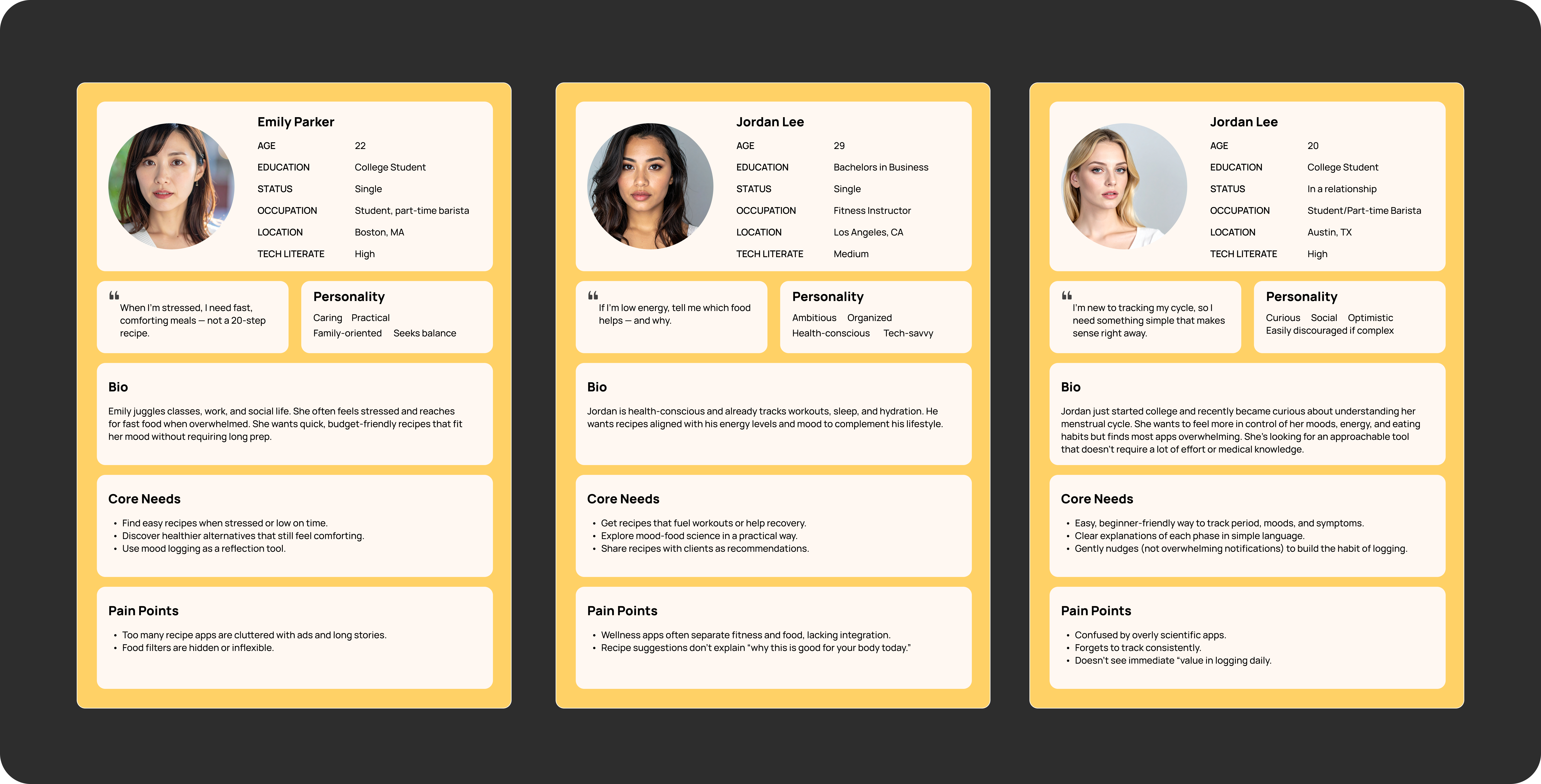
Market UX/UI Research
Through competitive analysis, I studied recipe apps like Tasty, Yummly, and Headspace’s mindful eating features. While Tasty excels at quick and engaging recipes, it lacks personalization. Yummly leverages AI but focuses only on flavor and nutrition rather than emotional needs. Headspace connects mindfulness and food but provides no actionable recipes. This revealed a gap for a product that combines personalization, mood-awareness, and ease of use.
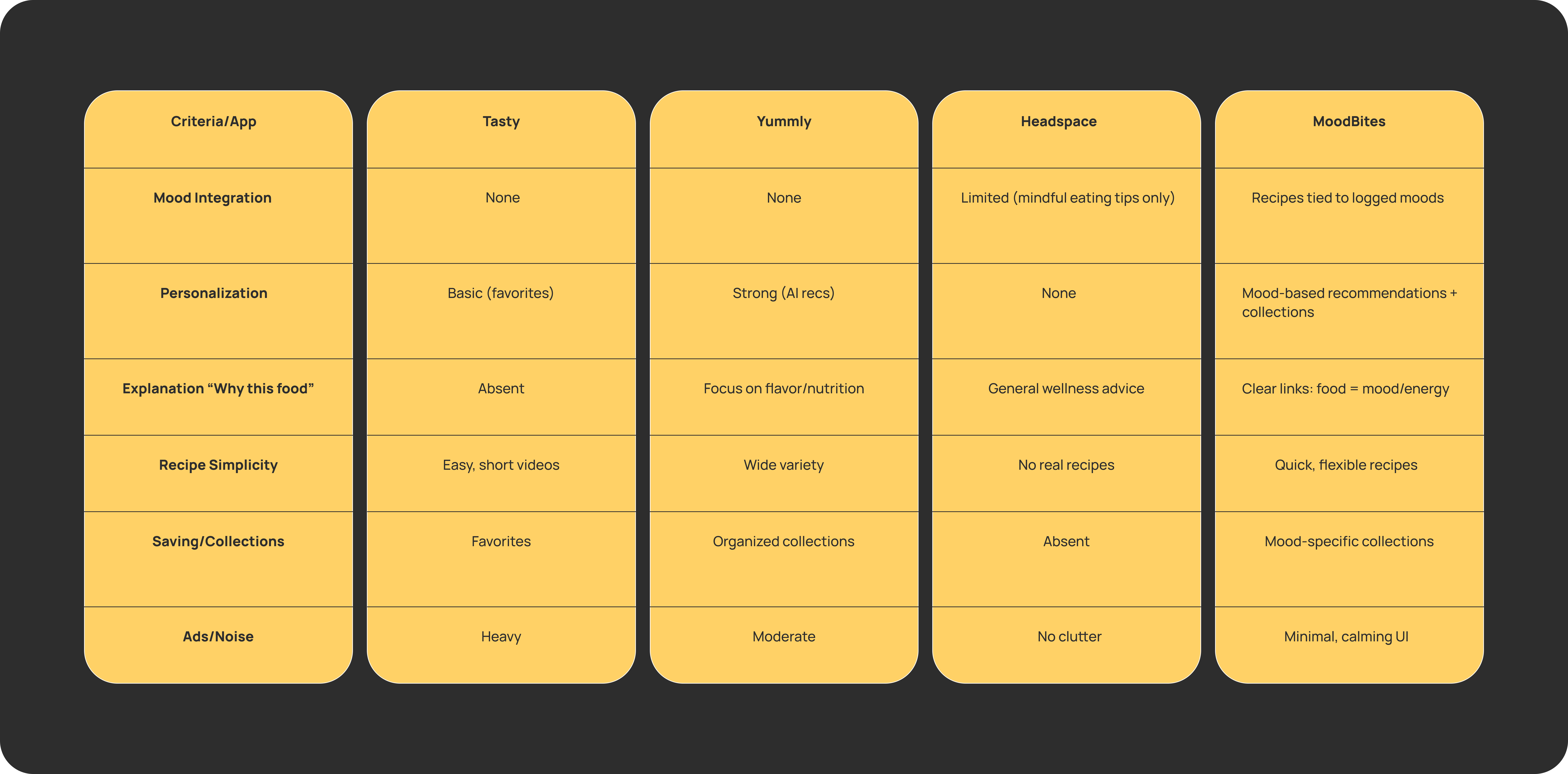
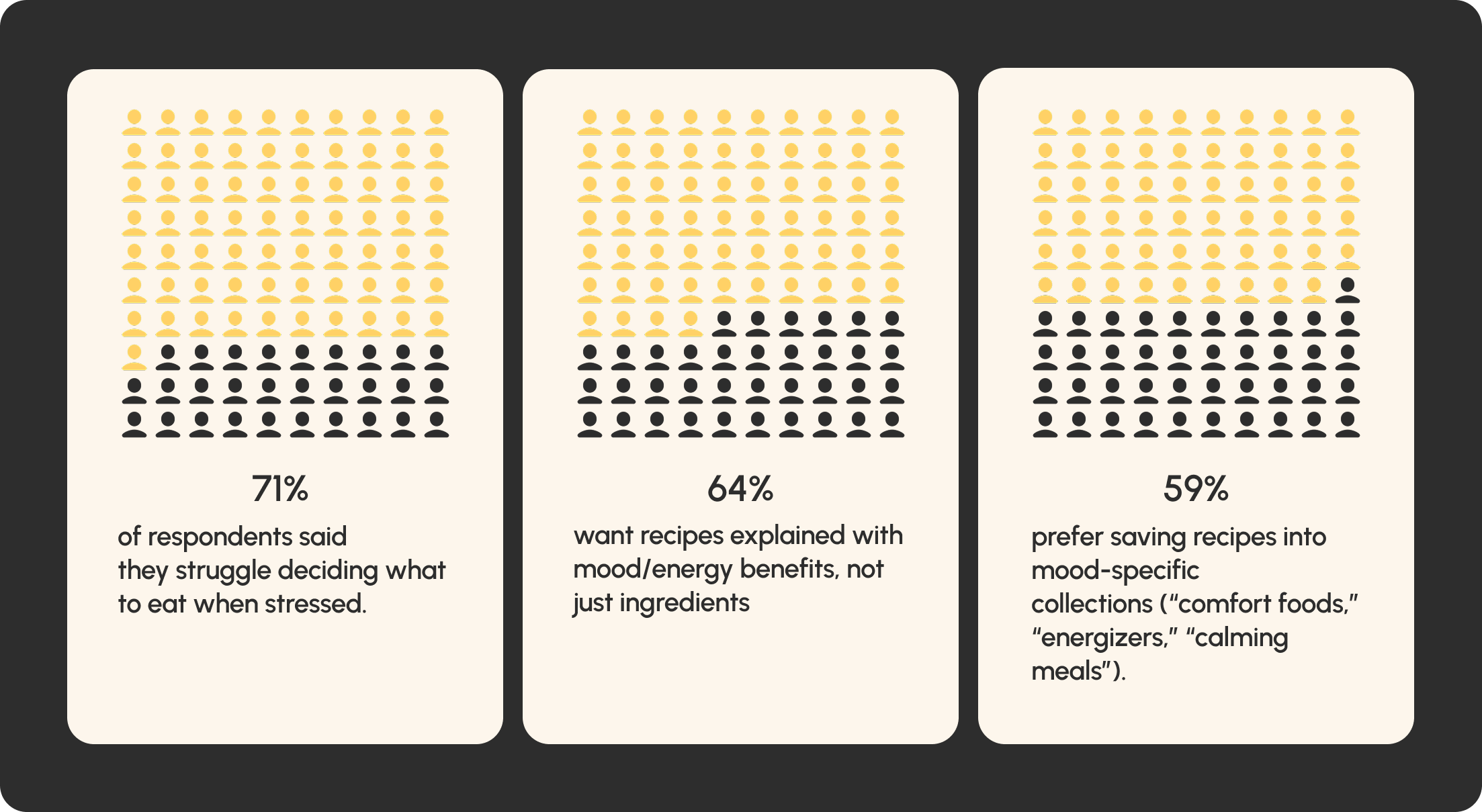

Wireframing
Early wireframes focused on three flows: mood input, recipe discovery, and saving recipes into collections. The mood input evolved from a basic form to an engaging emoji slider with an optional voice entry. Recipe cards were iterated to balance scannability and detail, with final versions using bold mood tags like “Comforting” and “Energizing.” The save-to-collection flow was simplified into a one-tap action, reinforcing quick decision-making

Testing Hypothesis
Two main hypotheses guided testing. The first was that placing mood logging upfront would improve engagement. Usability testing confirmed this, with 80% of participants completing mood logging within 15 seconds of opening the prototype. The second hypothesis was that adding short explanations about why a recipe matched a mood would increase trust. Testing validated this as well, with explanatory recipes being chosen nearly twice as often as those without context.
Selected UX/UI Improvements
Here are some design approaches that served as the foundation for the whole system redesign:
1. EMOTION-TO-MEAL RECCOMENDATIONS
Users input or log their emotions through simple text or quick-tap mood options. The system then suggests meals that reflect or balance those emotions — whether comfort food when stressed, energizing meals when tired, or calming recipes when overwhelmed. This feature reduces decision fatigue and creates a sense of care.
Users input or log their emotions through simple text or quick-tap mood options. The system then suggests meals that reflect or balance those emotions — whether comfort food when stressed, energizing meals when tired, or calming recipes when overwhelmed. This feature reduces decision fatigue and creates a sense of care.
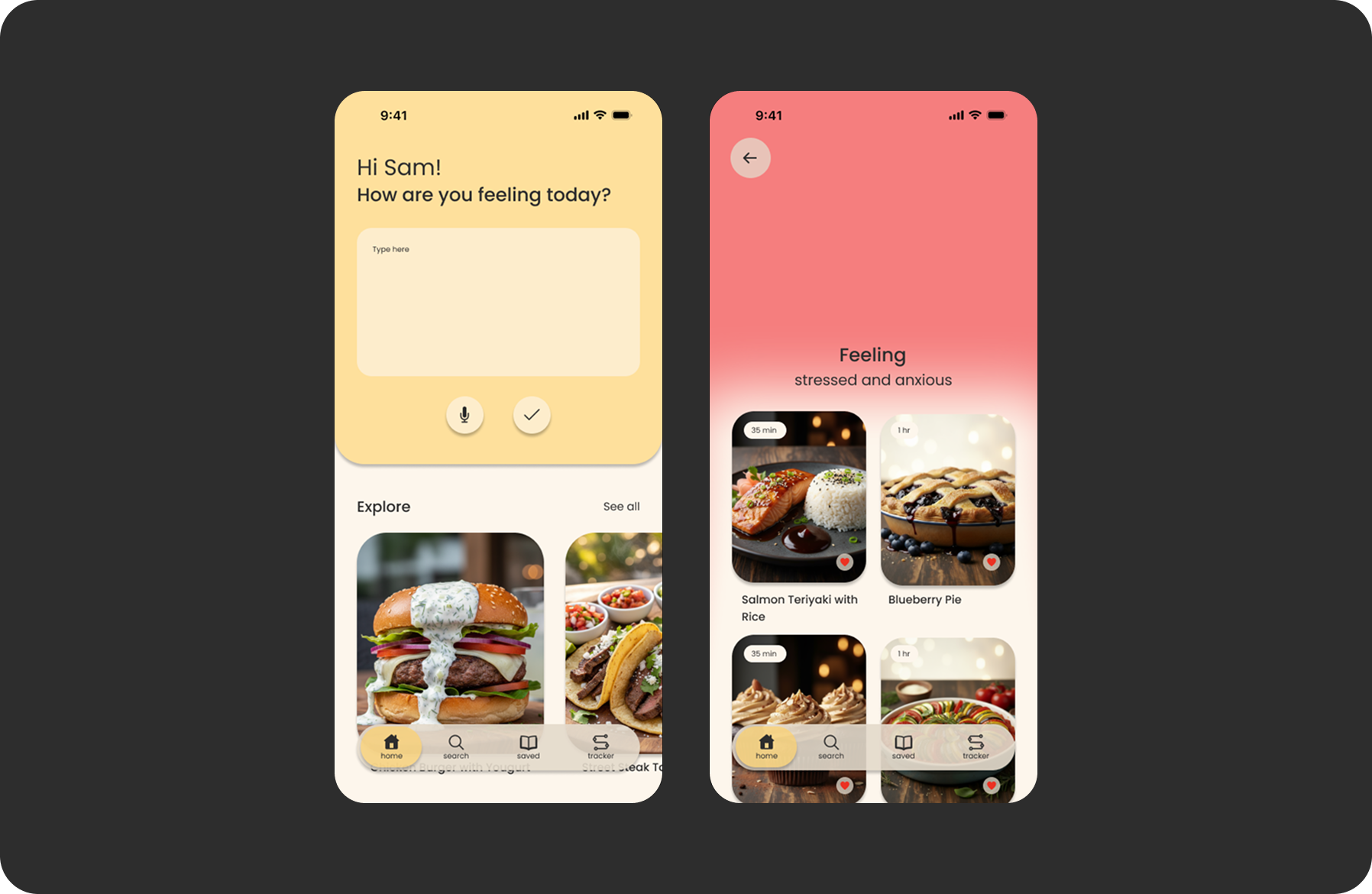
2. MOOD TRACKING & REFLECTION
A dedicated calendar allows users to see their mood history and associated meal choices. This visualization helps users recognize emotional patterns, offering insights into how mood affects eating habits over time. By framing meals in the context of emotional wellness, the app moves beyond simple recipe browsing.
A dedicated calendar allows users to see their mood history and associated meal choices. This visualization helps users recognize emotional patterns, offering insights into how mood affects eating habits over time. By framing meals in the context of emotional wellness, the app moves beyond simple recipe browsing.
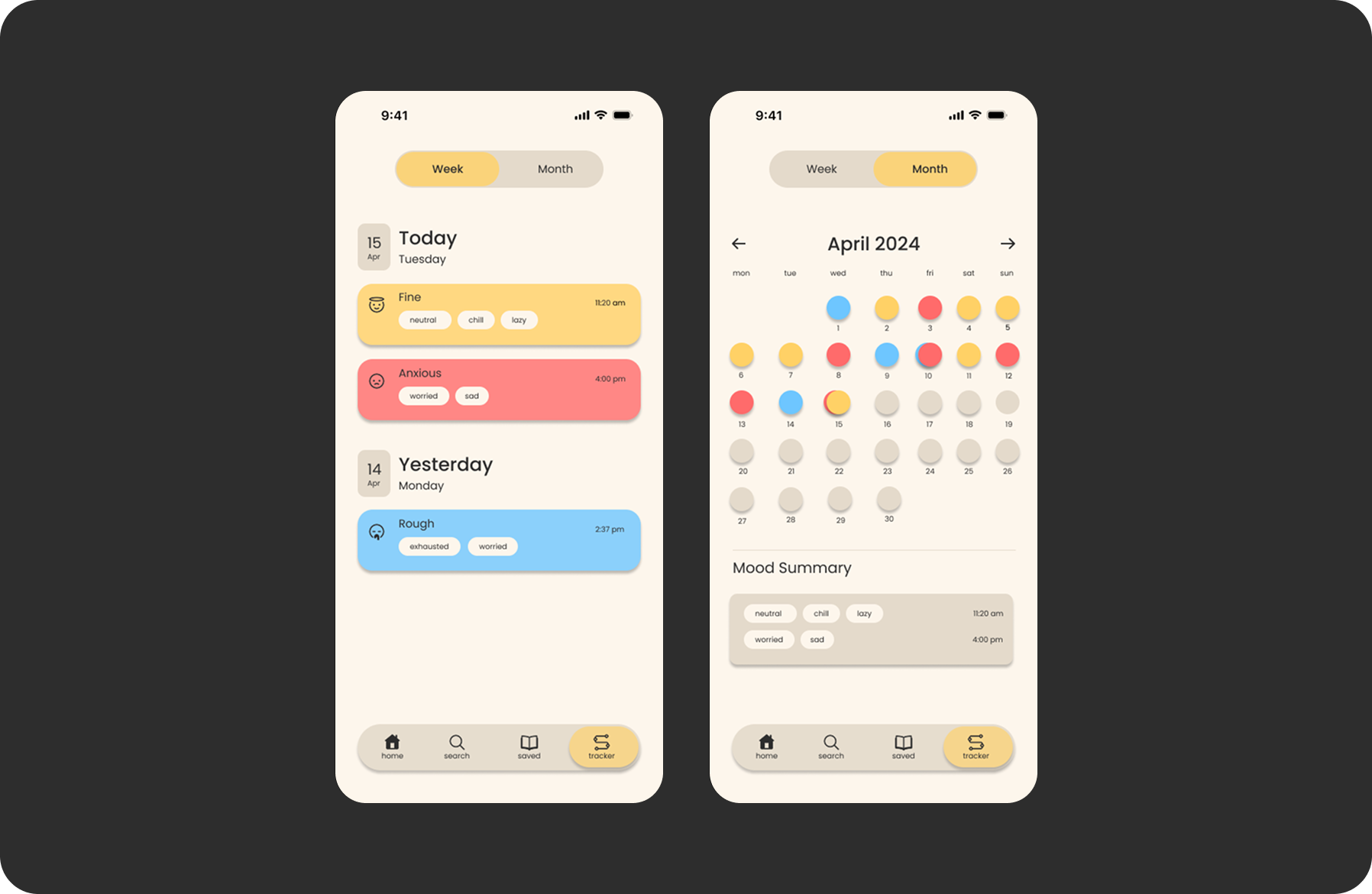
3. PERSONLIZATION & BOOKSHARING
MoodBites supports bookmarking favorite recipes, saving personalized suggestions, and learning from user preferences over time. The app adapts to each user’s patterns, ensuring that future recommendations feel increasingly aligned with both their tastes and emotional needs.
MoodBites supports bookmarking favorite recipes, saving personalized suggestions, and learning from user preferences over time. The app adapts to each user’s patterns, ensuring that future recommendations feel increasingly aligned with both their tastes and emotional needs.

Impact
The redesigned prototype reduced average decision-making time from 40 seconds to just 18 seconds. Recipes with explanatory copy doubled the likelihood of being selected, showing the value of clarity and context. Furthermore, 73% of testers reported that they would log their mood daily if it remained this simple, demonstrating MoodBites’ potential to build a strong habit loop.
Summary
MoodBites reimagines recipe discovery by centering it around emotional needs rather than just flavor or nutrition. Through competitive research, surveys, and usability testing, the project identified a gap in how people connect food with mood. By focusing on quick mood input, scannable recipe tags, mood-based collections, and explanatory copy, MoodBites offers a calm and personalized experience. The result is an app that not only helps people eat better but also empowers them to feel understood and supported in their daily lives.
